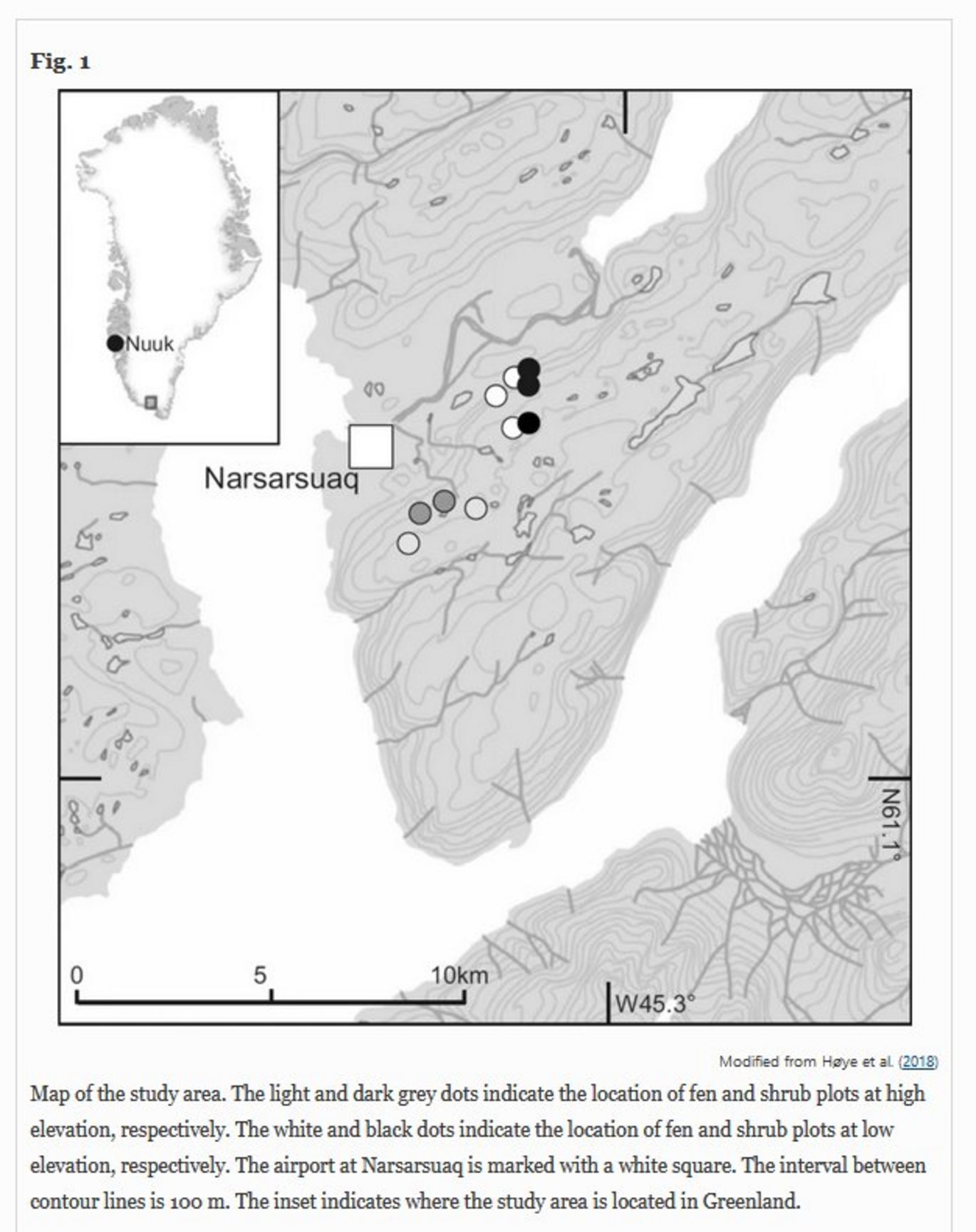Variation in abundance and life-history traits of two congeneric Arctic wolf spider species, Pardosa hyperborea and Pardosa furcifera, along local environmental gradients
New publication by Nathan Viel, Cecilie Mielec, Julien Pétillon & Toke T. Høye

Abstract:
The Arctic tundra is characterised by harsh conditions and environmental gradients are especially pronounced. Variation in functional traits along such gradients provide insights into the drivers of species abundance and distribution and are particularly valuable in this region currently experiencing strong climate warming. Over three consecutive years, we analysed the interacting effect of two environmental factors, habitat and elevation, on the abundance, body size, and clutch size in two common Low-Arctic invertebrate predators (Lycosidae, Araneae), Pardosa furcifera (Thorell 1875) and Pardosa hyperborea (Thorell 1872). Using generalised linear models, we firstly showed a habitat partitioning between P. furcifera, which dominated wet habitats, like fens, and P. hyperborea, which was more associated with drier habitats, like shrubs. Secondly, we found smaller body sizes at high elevation in P. hyperborea, a species that has a southern distribution in Greenland, and we identified season length as a major driver of the development in this species. In P. furcifera, a species likely more cold adapted, we found no body size difference between elevations, suggesting that local conditions (e.g. prey availability or snowmelt timing) are more important in explaining body size variations. Finally, body size and clutch size were strongly correlated in both species, but clutch size was not affected by habitat or elevation. We argue that fecundity is likely influenced by trade-offs and that considering additional complementary trait measurements would allow for a better understanding of the mechanisms underlying patterns in species life-history traits along environmental gradients.
